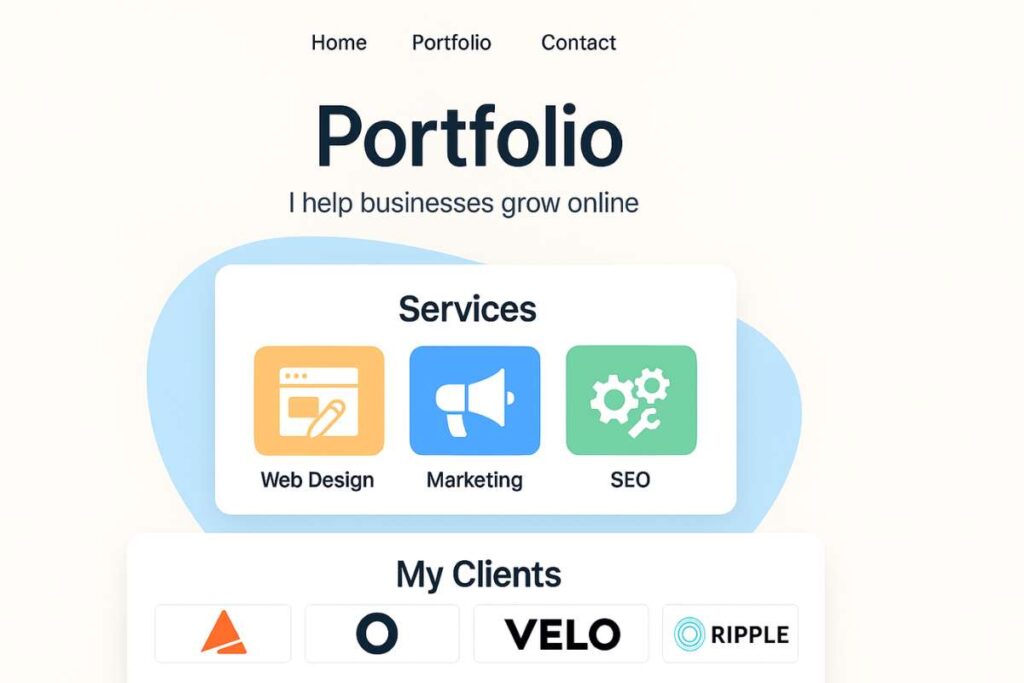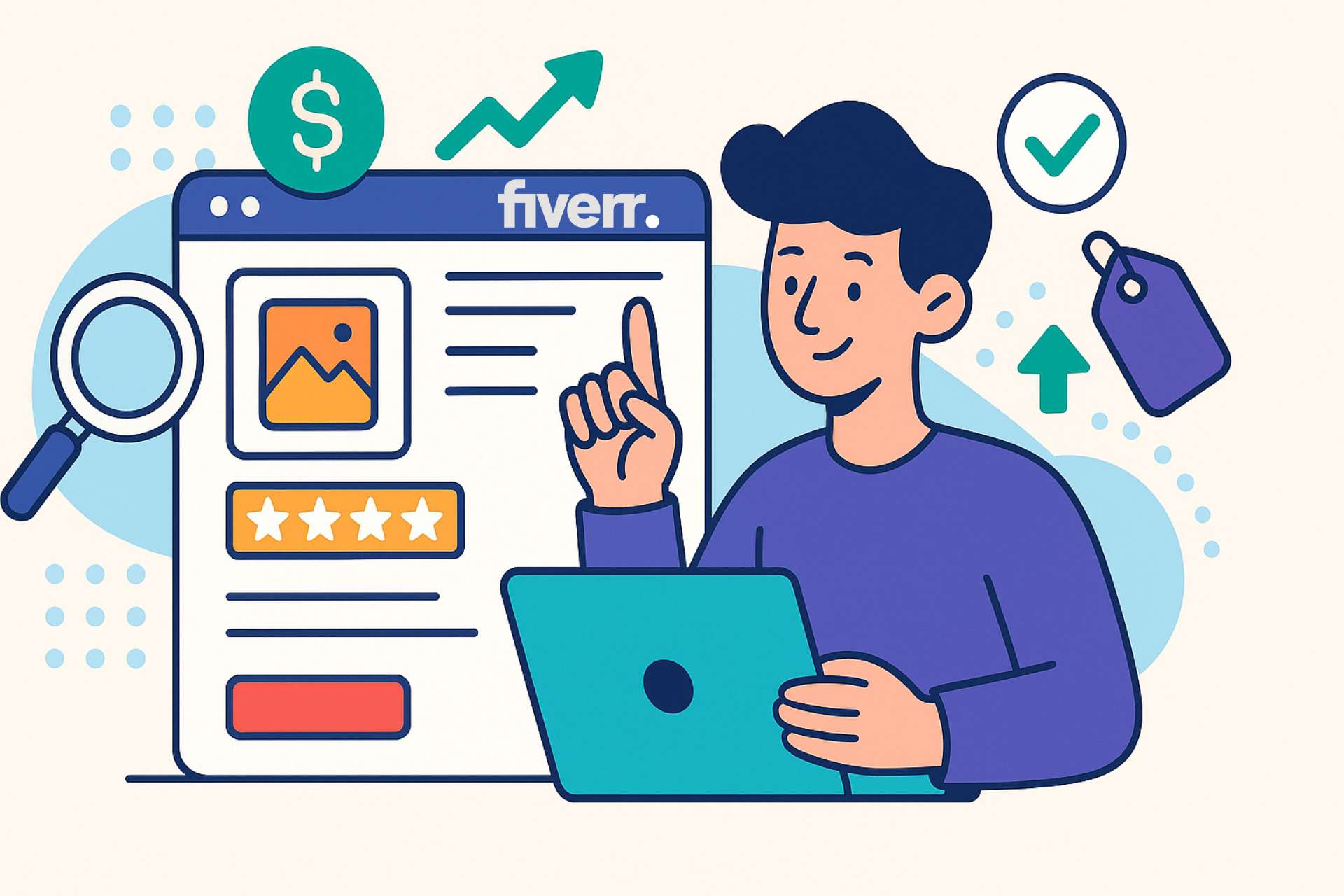How to Attract High-Paying Clients as a Beginner Freelancer

If you’re just starting out in freelancing, landing your first client feels like a win. But what if I told you there’s a smarter goal to aim for—even as a beginner?
Don’t just chase any client. Aim for high-paying clients who value your skills, respect your time, and are willing to invest in quality work.
I know the struggle: sending proposal after proposal and hearing nothing back. Or worse—getting replies from clients who want to pay ₱300 for something that takes three days to finish.
It’s easy to feel stuck doing low-paying gigs, just to get by or build a portfolio. But staying in that cycle won’t get you the freedom and income you truly want.
In this blog post, I’ll show you practical strategies—based on real experiences—that can help you attract premium clients, even if you’re just starting out.
Whether you’re on Upwork, promoting on social media, or building your freelance career through referrals, I’ll break down what works and what doesn’t. These are the exact steps I used as a Filipino freelancer and web developer to find clients who don’t just hire me, but trust and recommend me.
Let’s break the mindset that beginners can only work for cheap. You’re worth more, and I’ll help you prove it.
Understand What High-Paying Clients Want

Before you can attract high-paying clients, you need to understand what they’re actually looking for—because it’s not always about finding the cheapest freelancer on the platform.
High-paying clients are businesses, professionals, or brands who are ready to invest in results. They’re not just looking for someone to “do the work”—they want someone who can help them achieve specific goals, whether it’s growing their business, launching a website, improving their online presence, or solving a critical problem.
Here’s what they value most:
- Trust – Can you deliver what you say you will?
- Skill – Can you solve their problem efficiently?
- Professionalism – Do you communicate clearly and meet deadlines?
For these clients, price comes second. If you present yourself as someone who brings clarity, solutions, and results to the table, you’ll stand out, especially on crowded platforms like Upwork or social media.
There are also specific industries where high-paying clients are more common:
- Tech startups often need fast and reliable web developers.
- Real estate professionals want websites, listing platforms, and lead generation tools.
- Coaches and consultants need branded funnels, landing pages, and online booking systems.
- E-commerce sellers often invest in custom Shopify or WordPress solutions.
Now, should you go for local or international clients? Both have pros and cons.
- International clients usually pay more, especially those in the US, Canada, Australia, or Europe—but you’ll face more competition.
- Local clients, especially small businesses in the Philippines, can become loyal repeat clients—especially if you meet them through referrals or networking.
The key is not to chase every client. Focus on understanding and serving the type of client who sees the value you offer—and is willing to pay for it.
Build a Strong Freelancer Profile
Let’s get real—if you want high-paying clients, your freelancer profile needs to look and sound like someone worth investing in. Whether you’re on Upwork or using social media to find clients, your profile is your first impression, and it either builds trust or sends clients running.
Upwork Profile Tips
Your headline and overview are the most important parts. Most beginners make the mistake of writing generic titles like “Freelancer” or “I can help you with your website.” Instead, write something that shows value and transformation, not just tasks. For example:
“WordPress Developer for Coaches & Small Businesses | Fast, Mobile-Responsive Websites That Convert Visitors Into Clients”
In your overview, go deeper:
- Talk about your process.
- Explain the types of clients you help.
- Highlight results or benefits (ex: “I build websites that load fast, look great on mobile, and help your business get more leads.”)
Also, sprinkle in keywords your ideal clients might search for: “WordPress,” “business website,” “mobile responsive,” “e-commerce,” etc. This helps you show up in search.
If you can, add a short intro video. Keep it simple—smile, introduce yourself, mention who you help, and what results you deliver. This alone can instantly build trust.
Social Media Profile Optimization
Even if you’re not active on LinkedIn or Facebook for personal use, you can use them for professional credibility.
- Update your bio: “I help small business owners turn their ideas into working websites through clean, fast WordPress development.”
- Pin a portfolio post or a simple carousel showing your recent work.
- Post helpful content or mini case studies—even one screenshot with a short caption can show you’re active and skilled.
Whether online or offline, the goal is to position yourself as a problem-solver, not just a task-doer. That’s what high-paying clients are really looking for.
Use Your Strength as a Beginner to Your Advantage
You might think being a beginner is a disadvantage, but it’s actually a superpower if you know how to use it.
Clients—especially startups or small business owners—love working with freelancers who are hungry to prove themselves, open to feedback, and willing to go the extra mile.
As a beginner, you’re naturally more flexible, eager, and yes, often more affordable—but that doesn’t mean you should sell yourself cheap. Instead, use your stage as an advantage:
- Be the freelancer who responds quickly.
- Be open to revisions and collaboration.
- Be clear that you’re learning fast and committed to growth.
One of the best things you can do is share your learning journey in public. Post updates on Facebook, LinkedIn, or TikTok. Talk about what you’re building, what you’re learning, and the mistakes you’re fixing. When people see your progress, they start to trust you—even if you’re not yet a full expert.
And don’t dismiss your existing experience just because it’s not “paid.” School projects, personal websites, or passion projects still count. These can be turned into mini case studies or even full-on portfolio samples.
Clients don’t always need years of experience—they just need to believe that you can help them right now. Show them that, and you’ll be surprised at who’s willing to pay you well, even as a beginner.
Strategies to Get High-Paying Clients as a Beginner
Now let’s talk about the part most freelancers overthink: getting clients. As a beginner, you don’t need a fancy website, a full portfolio, or years of experience to attract high-paying clients. What you need is a smart, intentional approach that helps you stand out, solve real problems, and position yourself as someone worth investing in.
Here are three proven strategies that worked for me—and can work for you too.
1. Upwork Outreach Tips
Upwork is competitive, but it still works. The secret? Don’t apply to every job. Instead, look for quality job posts—those with clear goals, decent budgets, and clients who have a hiring history.
When you send a proposal:
- Customize it based on the client’s problem.
- Don’t start by talking about yourself—start by showing that you understand what they need.
- Then, explain how you can help them reach their goal. Keep it short, clear, and confident.
For example:
“Hi [Client Name], I saw you need a responsive website for your coaching business. I recently built something similar for a local business in Pampanga. I’d love to help you create a site that looks great and converts visitors into leads.”
Also, don’t undersell yourself. Pricing too low makes you look inexperienced or desperate. Instead, price based on the value you bring, and show clients why it’s worth it.
2. Social Media Marketing for Freelancers
If you’re not ready for Upwork, you can start attracting clients using Facebook, LinkedIn, or even TikTok. A lot of Filipinos underestimate the power of social media for freelancing, but it works when you use it with intention.
Don’t just post finished projects. Talk about your process.
- Share screenshots of your mockups or work-in-progress.
- Use storytelling: “This is what the website looked like before… here’s how we transformed it.”
- Make reels or carousel posts explaining common website mistakes and how to fix them.
Even if you’re not an influencer, consistently showing your skills and thoughts builds credibility. People who see you post regularly will remember you when they—or someone they know—needs help.
3. Referrals & Business Presentations
One of the most overlooked ways to get high-paying clients is through offline connections. In my case, many of my web development clients came from our brand, Where In Pampanga. We met business owners, listened to their needs, and simply offered solutions. That turned into long-term freelance work.
Even if you don’t run a platform, you can still use this strategy:
- Join networking events, expos, or business groups.
- Offer free mini-audits or consultations to build trust.
- Present yourself as a partner, not just a service provider.
Sometimes, one coffee meeting or quick audit can lead to months of paid work.

Pro Tip: Don’t wait for clients to come to you. Position yourself where they’re already looking—whether that’s Upwork, Facebook, or right in your local community. When they see someone reliable, skilled, and professional (even as a beginner), they’ll be more than willing to pay you what you’re worth.
Build Authority Even Without a Portfolio
One of the biggest roadblocks for beginner freelancers is this thought: “But I don’t have a portfolio yet. Why would anyone hire me?”
Here’s the truth: You don’t need a fancy portfolio to start getting high-paying clients. What you need is to show that you can do the work, even if no one’s paid you for it yet.
Start by creating sample projects or mockups for imaginary clients. For example, if you want to build websites for cafés or coaches, create a homepage design for a fictional brand like “Coach Ana” or “Brew & Bean Café.” Focus on showing your skill and how you solve real business problems with design and strategy.
Then, document your process. Share your work publicly using blog posts, Facebook carousels, LinkedIn breakdowns, or even TikTok videos. Show your thinking behind the design, what you’d do differently, and how it helps the business. This not only proves your ability, it builds trust.

Another powerful strategy? Volunteer for one NGO or local business. Offer to build them a website in exchange for a testimonial and the freedom to showcase it. Most small businesses would love the help, and you get something real to show.
And once you finish one solid project, repurpose it:
- 5 social media posts
- 1 case study blog or LinkedIn article
- 1 testimonial to put on your Upwork profile or website
That one project can build more authority than a page full of screenshots. It’s all about how you present your work—and how you frame yourself as someone who solves problems, not just someone who builds things.
Mindset and Habits That Attract Quality Clients

Getting high-paying clients isn’t just about strategy—it’s also about how you carry yourself. Clients don’t just pay for skills. They pay for energy, confidence, and peace of mind. If you want to be treated like a pro, you have to think and act like one—even if you’re just starting out.
Confidence
You don’t need to fake being an expert. But you do need to own what you can do. When you speak to clients, drop phrases like “I’m just new” or “I’m still learning.” Instead, say things like:
“Here’s how I approach this type of project.”
“This is a style that’s worked well for other businesses I’ve helped.”
Speak with belief in your value.
Consistency
You don’t need to post every day. But showing up once or twice a week—with a tip, a behind-the-scenes look at your process, or a success story—keeps you visible. Clients notice consistency. It’s a sign of reliability.
Curiosity
Don’t stop learning. Whether it’s a new web design trend, a faster workflow, or a better way to present a proposal, improving your craft makes you more valuable.
Communicate Like a Pro
Reply on time. Be polite but confident in chats, Zoom calls, and emails. Even basic professionalism like “Thanks for the update” or “Here’s my plan for this week” goes a long way in earning client trust.
High-paying clients don’t just look at your work—they look at how you show up as a partner. And that starts with mindset and daily habits.
Conclusion + Action Steps
Let’s end with some real talk: high-paying clients are out there, and yes, even beginners can land them. You don’t need years of experience, a long list of projects, or a fancy setup. What you do need is the right mindset, a clear profile, and the willingness to show up and serve.
Here’s a quick recap of what we covered:
- Build a strong freelancer profile that highlights results, not just tasks.
- Use Upwork outreach and social media content to attract attention and build trust.
- Don’t wait—create sample work, share your learning journey, and show clients what you can do.
- Use your network—referrals, community groups, and even simple conversations can lead to real opportunities.
Your next step? Pick ONE platform this week—Upwork or Facebook—and take action. Update your profile, post a mini case study, or apply to one job. That’s it. Small steps compound into big wins.
And hey—if you’re feeling stuck or overwhelmed, don’t do it alone. Send me a message or drop a comment. I’d be happy to point you in the right direction or share what’s worked for me.
The freelance life you’re dreaming of? It’s closer than you think.






